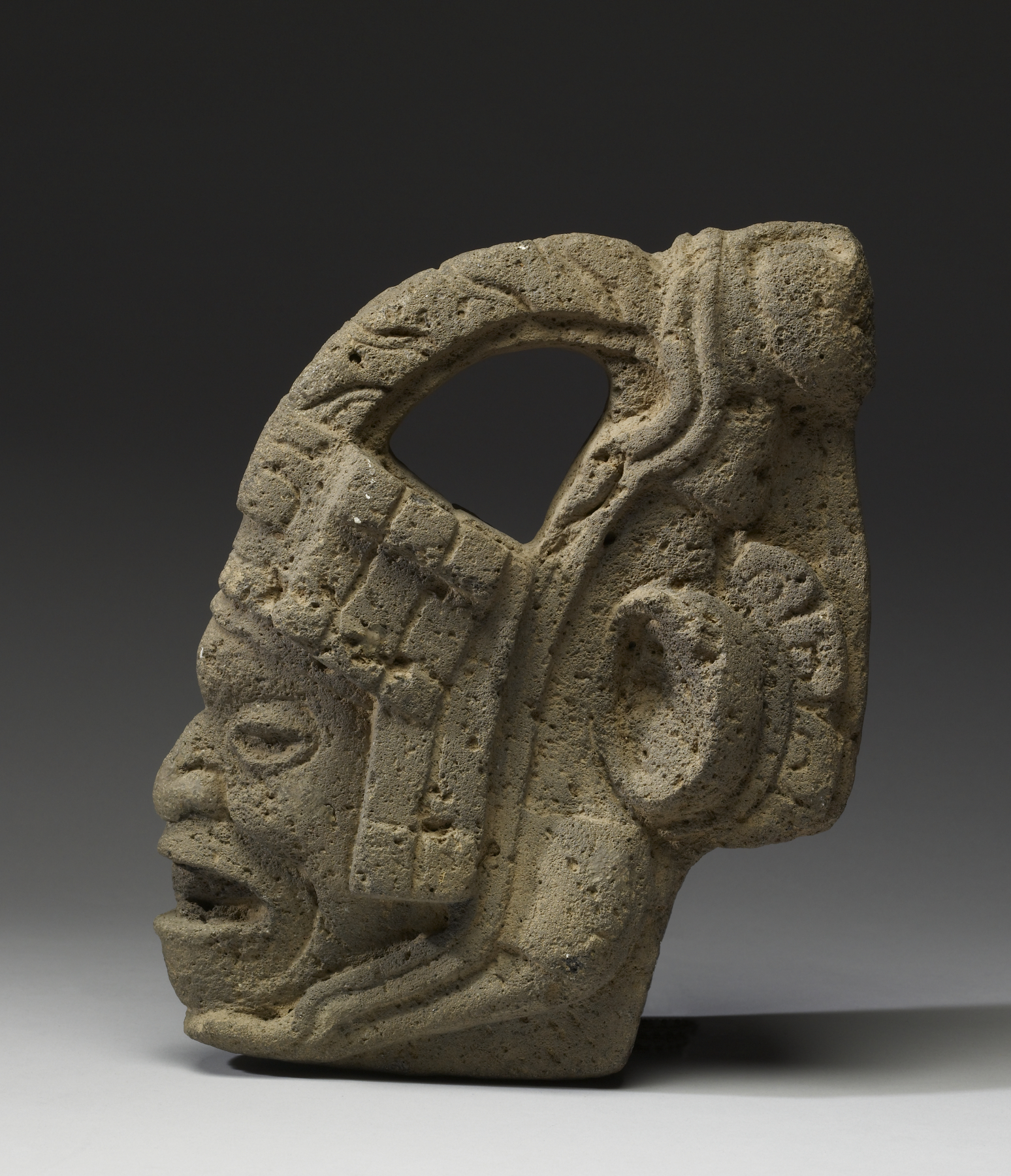Human Head Hacha
(Ancient Americas )
This object, known as an hacha (the Spanish word for axe), was part of a player’s paraphernalia for the ritual ballgame played in Mexico and Central America. This game was played with a solid rubber ball that was often very heavy, and could cause great damage to players without the proper equipment. Men (and sometimes women) are shown wearing protective gear in ceramic figurines dating from as early as about 1000 BCE. They are often shown wearing thick belts, known as yokes, to which hachas could be attached at the front or sides, perhaps to be used as a point to hit the ball. The hachas used in actual ballgames would likely have been made of wood; the many stone examples known may have been replicas made in more elite materials, and perhaps served as markers on the ballcourt as well, when set into a niche in a wall.
This hacha shows the face of a man with open mouth, perhaps caught at a moment of exertion during a ballgame. He wears an elaborate helmet that may represent the upper jaw of a crocodile or mythical predator, thrown back above his forehead. The round circles on it may represent the bulging eyes of an amphibian, or perhaps the furry ears of a jaguar. By using the imagery of various powerful predators, a ballplayer presented himself as a formidable foe on the ballcourt.
Provenance
Provenance (from the French provenir, 'to come from/forth') is the chronology of the ownership, custody, or location of a historical object. Learn more about provenance at the Walters.
Fine Arts of Ancient Lands, New York [date and mode of acquisition unknown]; Private collection, April 1989 [mode of acquisition unknown]; Walters Art Museum, 2008, by gift.
Geographies
Mexico (Place of Origin)
Measurements
H: 10 1/4 x W: 8 1/4 x D: 3 1/2 in. (26 x 21 x 8.9 cm)
Credit Line
Anonymous gift, 2008
Location in Museum
Not on view
Accession Number
In libraries, galleries, museums, and archives, an accession number is a unique identifier assigned to each object in the collection.
In libraries, galleries, museums, and archives, an accession number is a unique identifier assigned to each object in the collection.
29.8


